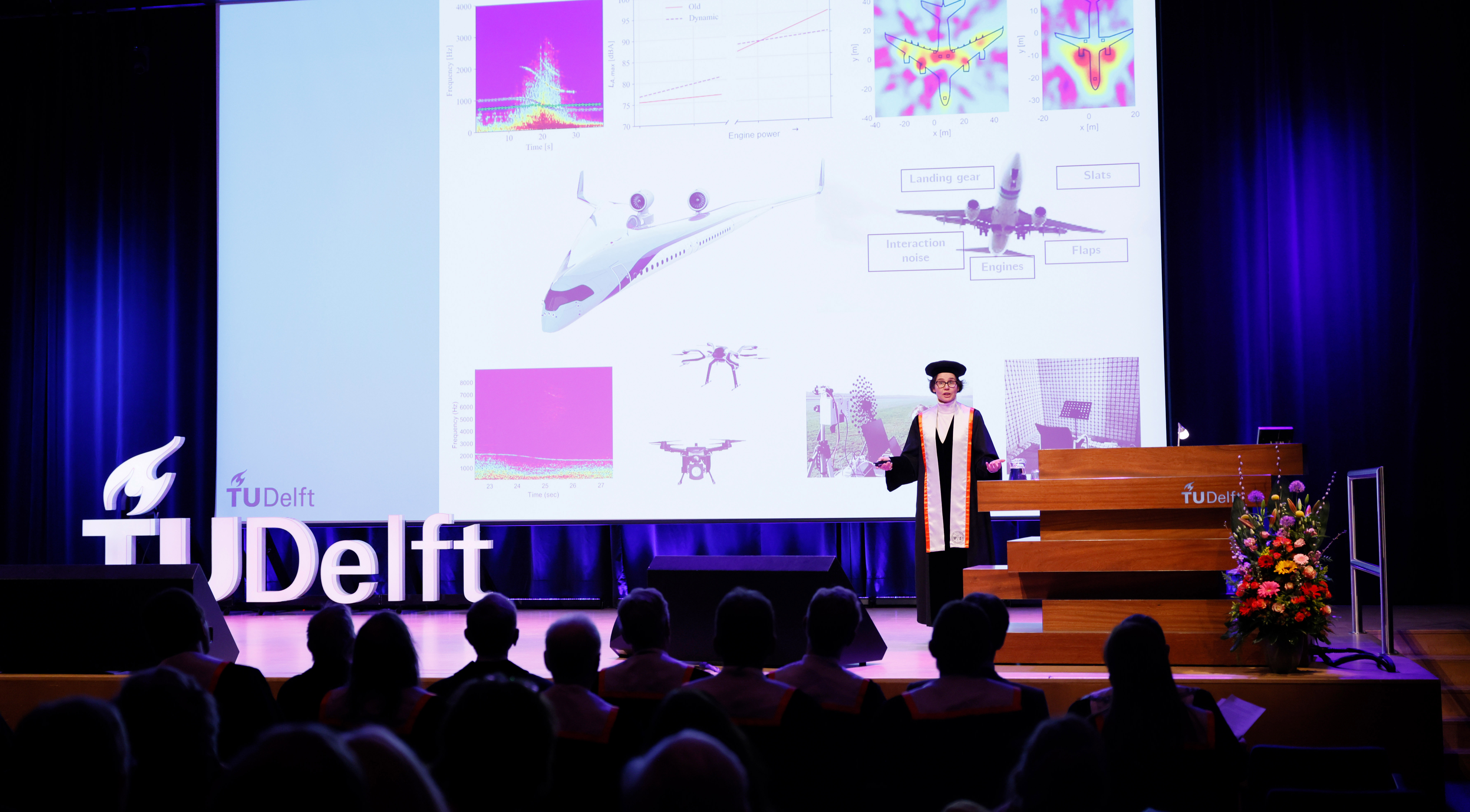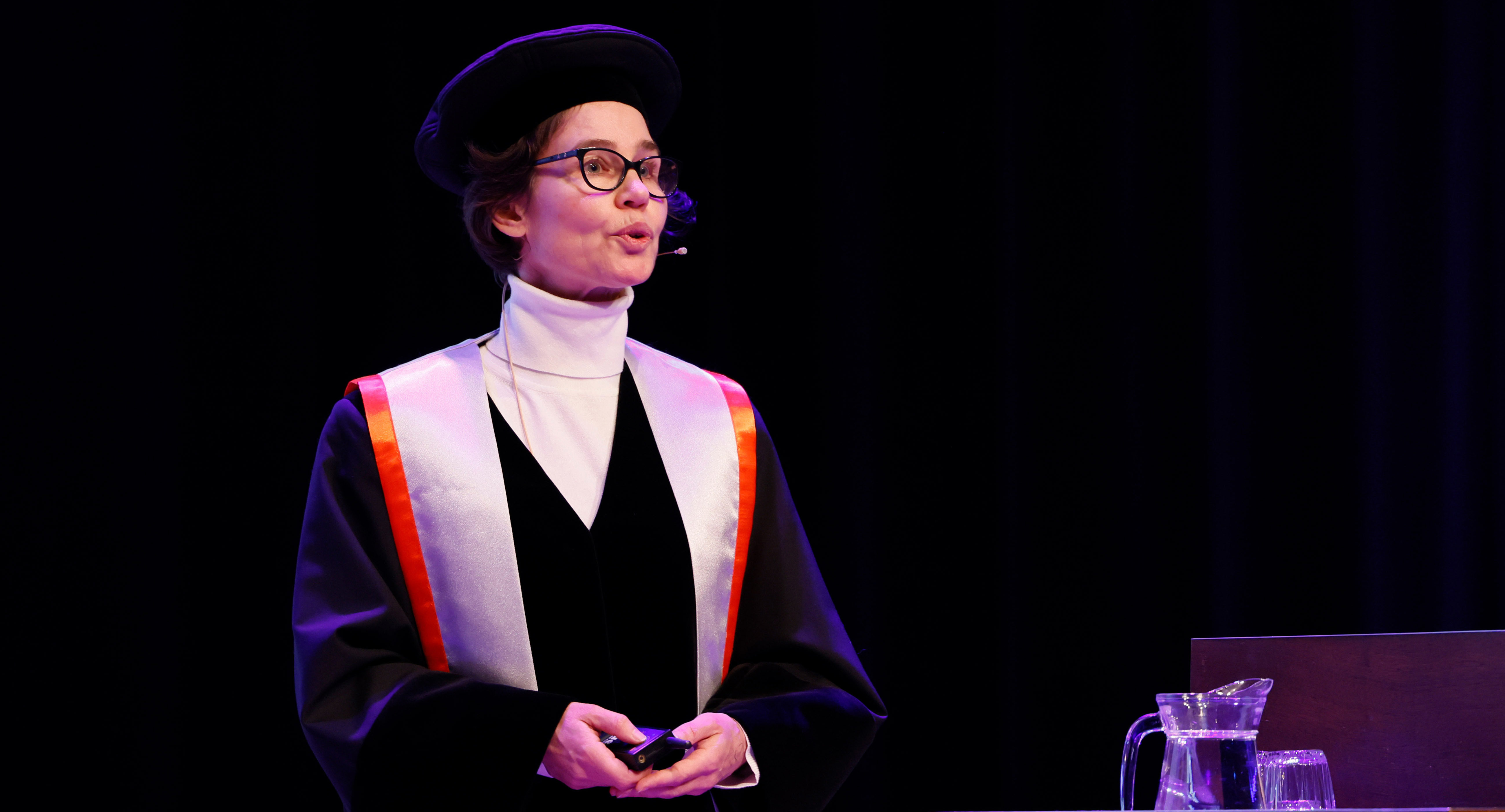Working in this field is a life of puzzles
Looking at aircraft noise. A title that takes a while to land. How can you look at sound? And, what information does it provide? Mirjam Snellen, Full Professor ‘Aircraft Noise and Climate Effects (ANCE), knows all about it. On Friday, Feb. 3, she held her inaugural address in the TU Delft Auditorium. An impressive speech about the need for new computational models for sustainable aviation.
"Looking at sound is the common thread in my work. I see it as a challenge to extract the maximum amount of information from measurements. For aircraft noise, this is essential to arrive at better models and thus better predictions. Indispensable for the design of new aircraft configurations and for determining quieter flight paths."
Acoustic imaging
In her research, Mirjam Snellen's tools include acoustic imaging, a technique that helps us ‘see’ sound by representing the sound source in the form of an image. With the help of acoustic imaging, models for sound prediction can be improved. No unnecessary luxury according to Snellen.
Advanced models
"In the Netherlands, we use Nederlands rekenmodel NRM (Dutch calculation model). The plan is to replace this soon with a similar European model, the Doc 29 model. These best practice models are capable of making noise predictions for many locations and many flight movements in a short period of time. However, there is a major drawback."
"These models see an aircraft as one noise source. That is not comprehensive enough. In reality, the total noise comes from an interplay of several separate contributors. Think of the noise from the engines, the landing gear or the wing. With the current models, we cannot distinguish between the different sources."
In her speech, the Professor therefore emphasizes the need for more advanced models that can predict noise at the component level. Snellen also shows how smarter use can be made of already available data.
"Here in the Netherlands, we have a very interesting system: NOMOS (Noise Monitoring System). It consists of 41 measuring points that continuously register noise. That could be a scooter or a barking dog. Algorithms can determine whether the noise is coming from an airplane, With the NOMOS monitoring stations, we can compare model predictions and measurements from a large number of locations."
Snellen says she will focus on validating new models in the coming period and concludes with the many possible applications of acoustic imaging.
Potential applications
"We can look at aircraft noise in a lot of ways and derive a lot from the measured noise. For example, locating objects based on sound. So, aircraft, but also drones. And, what type they are. We also want to measure the degree of nuisance. Less noise does not always mean less nuisance. Tonal noise, for example, is often experienced as a nuisance. We therefore want to be able to determine per aircraft component not only the level, but also the annoyance. It would be great if we could achieve a quieter and more pleasant sounding environment."

